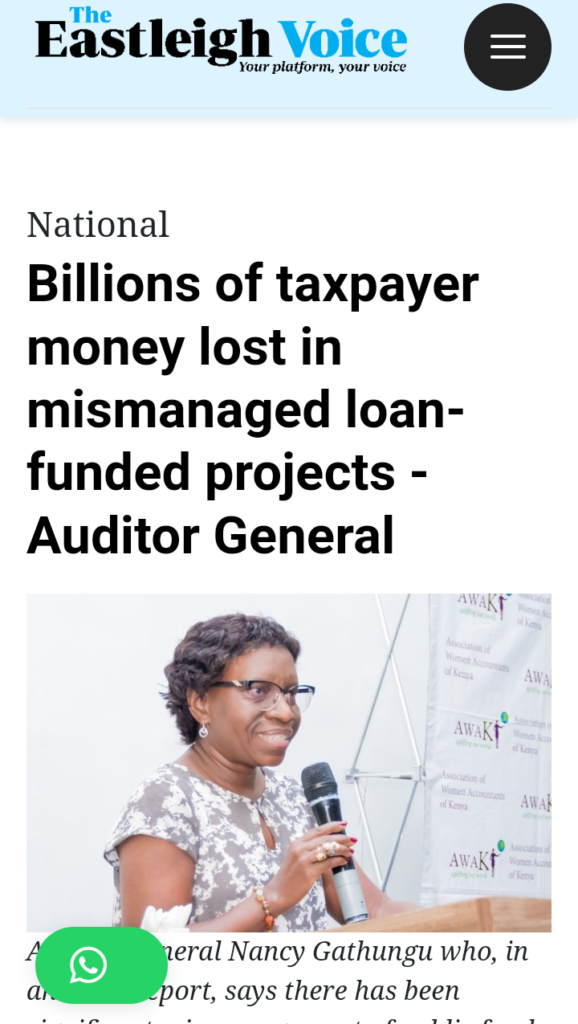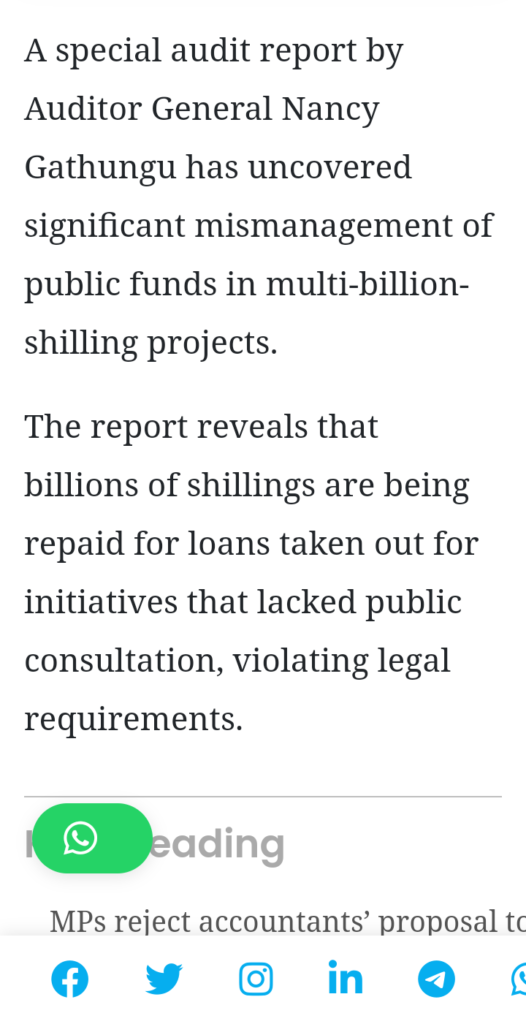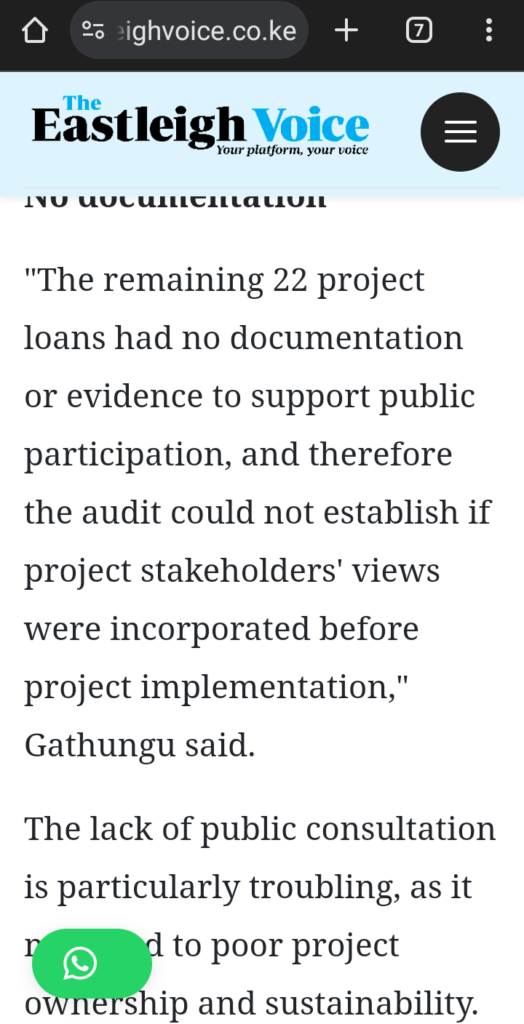A recent audit report by Auditor General Nancy Gathungu has revealed a disturbing level of mismanagement in Kenya’s handling of loan-funded projects, exposing taxpayers to unnecessary financial and legal risks.
Presented to the National Assembly’s Debt and Privatisation Committee, the report paints a grim picture of negligence, lack of transparency, and poor oversight in multi-billion-shilling initiatives.

The audit reviewed 32 projects financed through external loans. Shockingly, only five of these projects had secured the necessary legal opinion from the Attorney General, a clear breach of required legal procedures.
The remaining 27 projects, according to Gathungu, lacked critical documentation, such as public participation evidence, feasibility studies, and approval correspondences. Without these, the audit could not confirm whether stakeholders’ views were considered during the project planning stages.
This omission is not just procedural it undermines the sustainability and ownership of the projects, leading to poor outcomes in the long term.

The report highlights that 17 of the projects have been completed, while six remain stalled, six are ongoing, and five were outrightly cancelled.
Among the stalled projects are the Kisii Hospital Cancer Care Treatment Centre, the Sondu-Homa Bay-Awendo electrification project, and the Kimira-Oluch Smallholder Farm Improvement project.
Delays and poor planning were also cited for the Mombasa Gate Bridge construction and the Kenyatta University Teaching, Research, and Referral Hospital.
The stalled and poorly executed projects suggest not only mismanagement but also a lack of foresight in their planning and execution.

Public consultation is notably absent in many of these projects. Gathungu warned that the lack of stakeholder involvement has a direct impact on the long-term viability of these initiatives.
Without public input, projects risk failing to meet local needs, leading to wasted resources and limited public support.
For taxpayers, this means they continue to shoulder the burden of loans for initiatives they neither endorsed nor benefit from.
The financial toll on Kenyans is immense.
The report indicates that more than 50% of Kenya’s external debt is denominated in foreign currencies, leaving the country vulnerable to exchange rate fluctuations.
Additionally, during the 2022/2023 financial year, the government paid KSh 55.8 billion in commitment fees for unutilized loans.
For instance, a commitment fee of KSh 474 million was incurred for the underground electric power distribution network project, which faced delays in fund disbursement.
Transparency issues are another glaring concern.
Of the 32 projects audited, only twoSondu-Miriu hydropower and Sang’oro power plant provided documentation on loan negotiations.
This lack of transparency raises the risk of unfavorable loan terms, with potential hidden costs further burdening taxpayers.
Gathungu also noted that the absence of legal opinions from the Attorney General on 27 projects leaves the government exposed to predatory financing conditions.
In response to these revelations, National Treasury Cabinet Secretary John Mbadi pledged greater transparency in public debt management.
He promised to disclose the identities of Kenya’s creditors, the terms of the loans, and to collaborate with the Auditor General for a comprehensive audit of the country’s public debt.
Despite these assurances, the findings highlight systemic failures in managing public resources.
The mishandling of loan-funded projects not only wastes taxpayers’ money but also erodes public trust.
Urgent reforms are needed to ensure proper planning, public participation, and legal compliance in future projects.
Only then can Kenyans hope to see value for the billions they are forced to repay.





















Add Comment